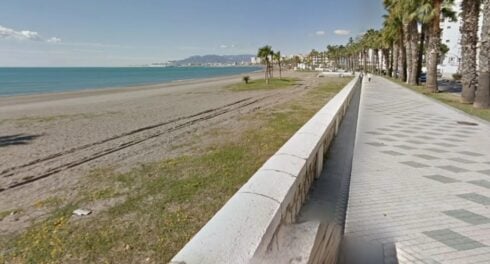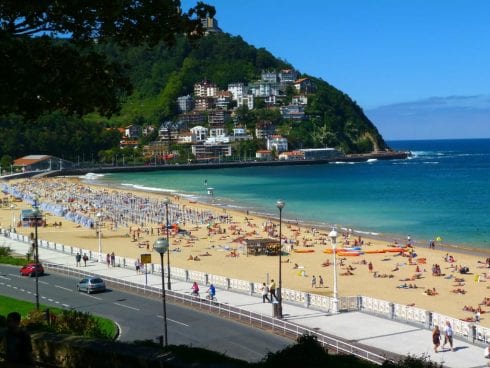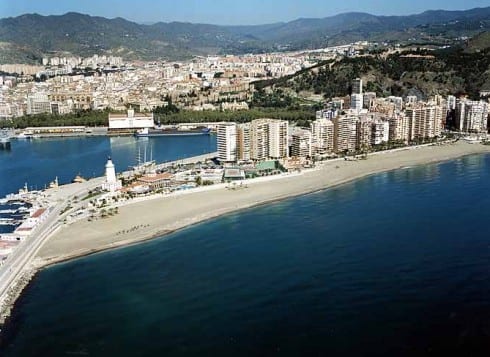
‘WELCOME to the most beautiful town in Spain,’ toothless local Jorge calls out in broken English as I wipe the sweat from my brow. (OK, so I still look like a tourist, despite four years in Spain.)
I had just hiked up to the top of Frigiliana which has indeed been crowned one of the country’s most picturesque pueblos, as plaques through the village will tell you at every turn.
A 10-minute drive up from the coast from Nerja, it’s the pearl in a string of white-washed villages glistening in the hills of the Axarquia and its nearby Granada neighbour, the Costa Tropical.

Either way, this is the very laid-back eastern end of the Costa del Sol, and boy, take from me a ‘westie’ based near Marbella, it really is a breath of fresh air.
“This is our little paradise,” beams grandfather Jorge, who has lived here his entire life. “We have a great local community, amazing food and sunshine, what more do you need?”
Some of the views inland wouldn’t look out of place in Jurassic Park – minus the dinosaurs – and hidden in that jaw-dropping landscape is a whole world of stunning mountain villages, underground caves and beautiful, unspoilt hidden coves.

Jorge recommends a visit to the outer walls of this old Moorish fortress town, and a break at his friend’s tapas bar, but it’s 300 metres back down the ancient cobbled street.
I opt for the closer Las Chinas, having just toiled up the Everest-steep slope in searing heat, the car parked a good kilometre down the road.
The food didn’t disappoint: a dorada as meaty as chicken, the whole three-course menu del dia typically for the region, cheap as chips.

For something sweeter, head to the only sugar cane factory still functioning in Spain.
Still chugging out deliciously sticky molasses (treacle), the El Ingenio miel de cana factory operates from the magnificent 16th century Nuestra Senora del Carmen mansion in the heart of Frigiliana.
Delve deeper into its maze of whitewashed alleyways – maybe after a restorative caña or two – and you can sense the pride here, with abuelas tending to their prize-winning geranium pots and not a scrap of rubbish blowing down the streets.
It’s a recipe that’s repeated across the hills of this region – fantastic food, incredible views, charming villages with Arabic ruins and just as friendly people – just ask the expats, who have set up in Sayalonga, Comares, Competa or Salobrena.
If you’re not set on staying quite so rural, Vélez-Málaga the Axarquia’s capital, which offers a faster pace and its own brand of charm.
On arriving, there’s only one direction to go – and that’s up!
From the ruined Moorish castle you can map the town with its busy roads, coffee shops and bars and a historic quarter typical of so many white hilltop villages embedded throughout a region that was once a jewel of Islam.

The route to the castle will take you to the Jardin de los Remedios, a park that sits parallel to the castle and overlooks a church with a spire that protrudes from the white-washed Lego-stacked houses below.
With its streams, miradors and benches, the park is the perfect escape from the bustling centre, offering up fisheye lens views from the Med to the mountain tops.
The statue of Jesus – Velez’s answer to Rio de Janeiro’s Christ the Redeemer – has the best panorama, watching over the action from his lofty perch next to the Ermita de la Virgen church.

Head over to the castle and watchtower for a glimpse into the Moorish past which shaped the Axarquia region. Although parts of the building date back to the 10th century, its heyday came 400 years later, when it was one of a chain defending the mighty Arabic Nasrid Kingdom of Granada.
The entire city played a part in subduing a notoriously turbulent zone, hence the old Moorish name for it: Ballix-Malaca – or Fortress of Malaga. With 1,500 metres of defensive walls and numerous solid turrets, the castle provided such strong defence it was used in a military capacity right up to the 19th century.
The mountain towns and villages of the Axarquia from Competa to Comares and Archez to Algarrobo are full of signs of their Moorish past and olden days in general.
Each has a wonderful crop of white houses stacked higgledy-piggledy around quaint plazas and along timeless cobbled streets.
But no trip to the Axarquia is complete with seeing the charming Nerja.
It’s famous Balcon de Europa jutting out into the Med offers theatrical views while the popular town has managed to retain its Andalucian credentials and its rocky coves, sandy beaches and pueblo vibe are the envy of its more westerly Costa del Sol rivals.

Nerja was left untouched by the massive tourism development boom which hit the likes of Torremolinos and Marbella from the 1950s onwards.
But that all changed when five boys on a bat-hunting trip stumbled upon the opening to a cave on a hillside above the tiny fishing village of Maro, a few miles east of Nerja.
Vast caverns were revealed, with spectacular rock formations showing evidence of Paleolithic man.
General Franco himself came to view the ‘Cueva de Nerja’ and coach-loads of visitors subsequently followed suit.
And when Nerja was chosen as a location for the 1980s TV series, Verano Azul, its future as a tourism destination was set. The series left an indelible mark. Now, wherever you go in Nerja, you’ll come across the name, which means blue summer. There is a Verano Azul travel agency, bus company, park, block of apartments … you may even find a bar serving a Verano Azul cocktail.
But if you want to get away from it all – the disco bars, the tourist shops and the bustle – head for one of the small coves just below the town, or nearby in Maro.

Nerja’s beaches are cut off from the town and roads, backed by sheer cliff-face. You can sit on the sand for hours in solitude, lose track of time, without seeing a sign of civilisation, just coastline colliding with blue sea in both directions.
It’s so un-Costa del Sol! But there again, I am from the western end.
And, sitting alone on my rock, toes in the sea, watching the sun set over Malaga, the sleepy, do-nothing lifestyle of the laid-back ‘East’ has never seemed more appealing.
Click here to read more News from The Olive Press.








